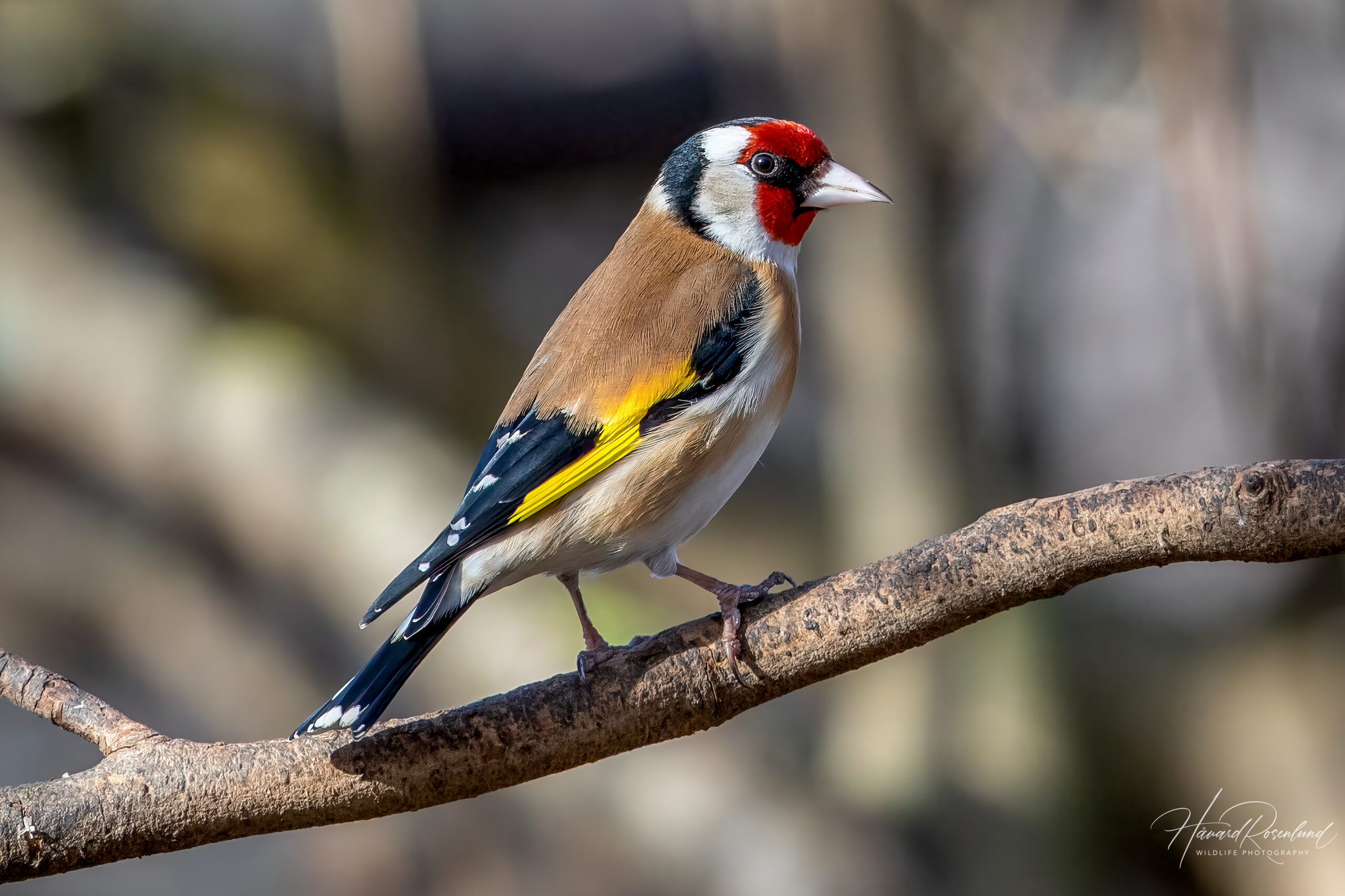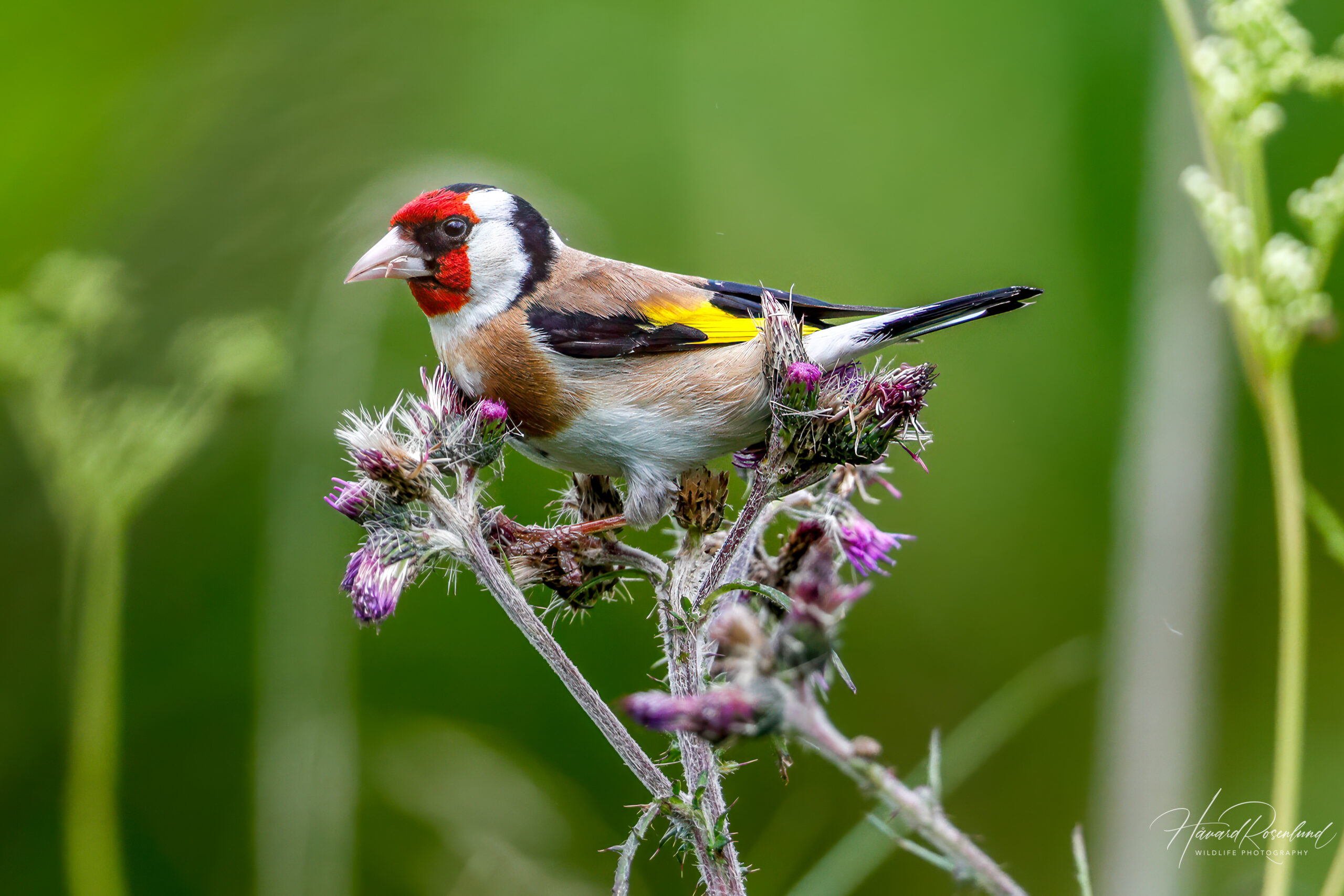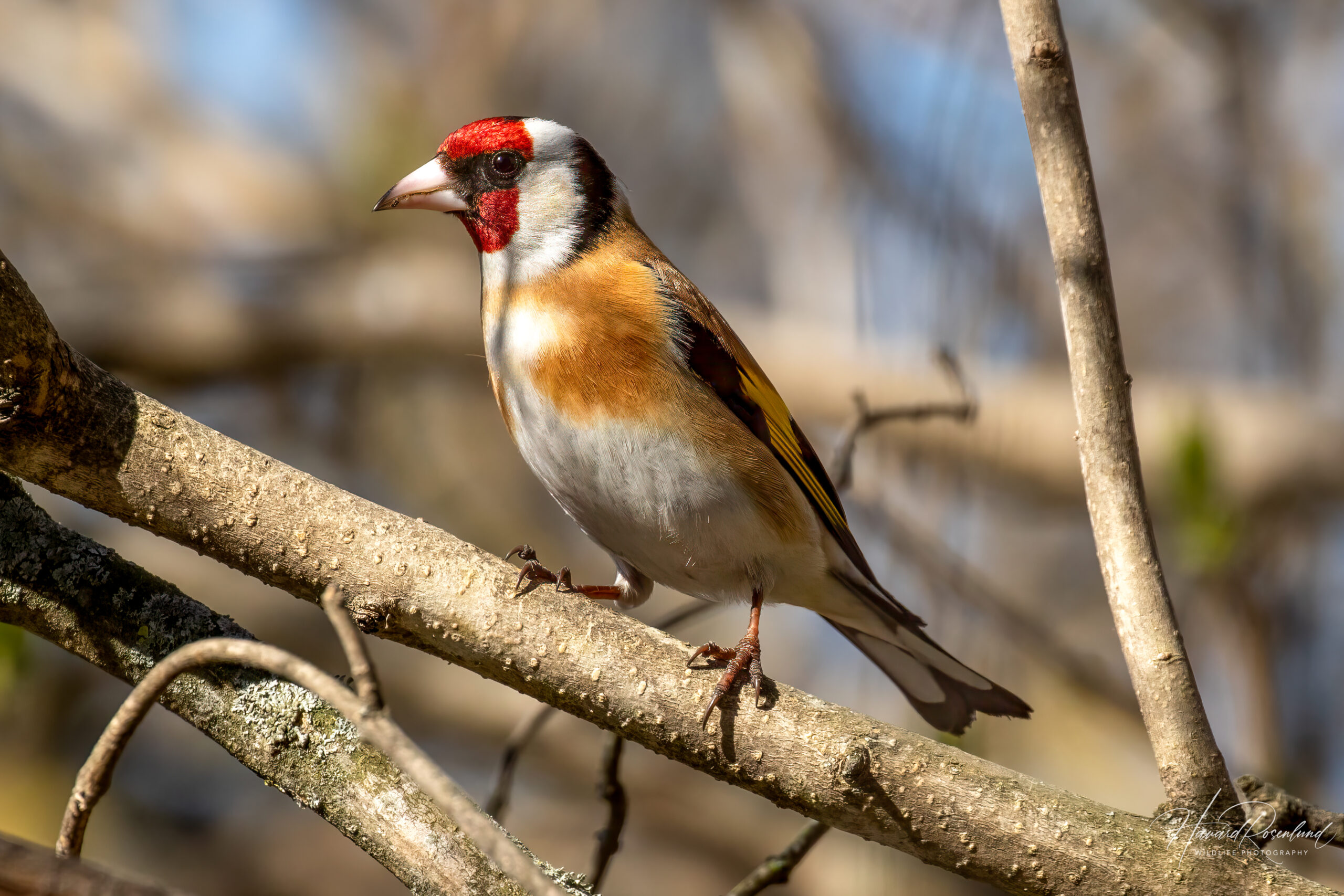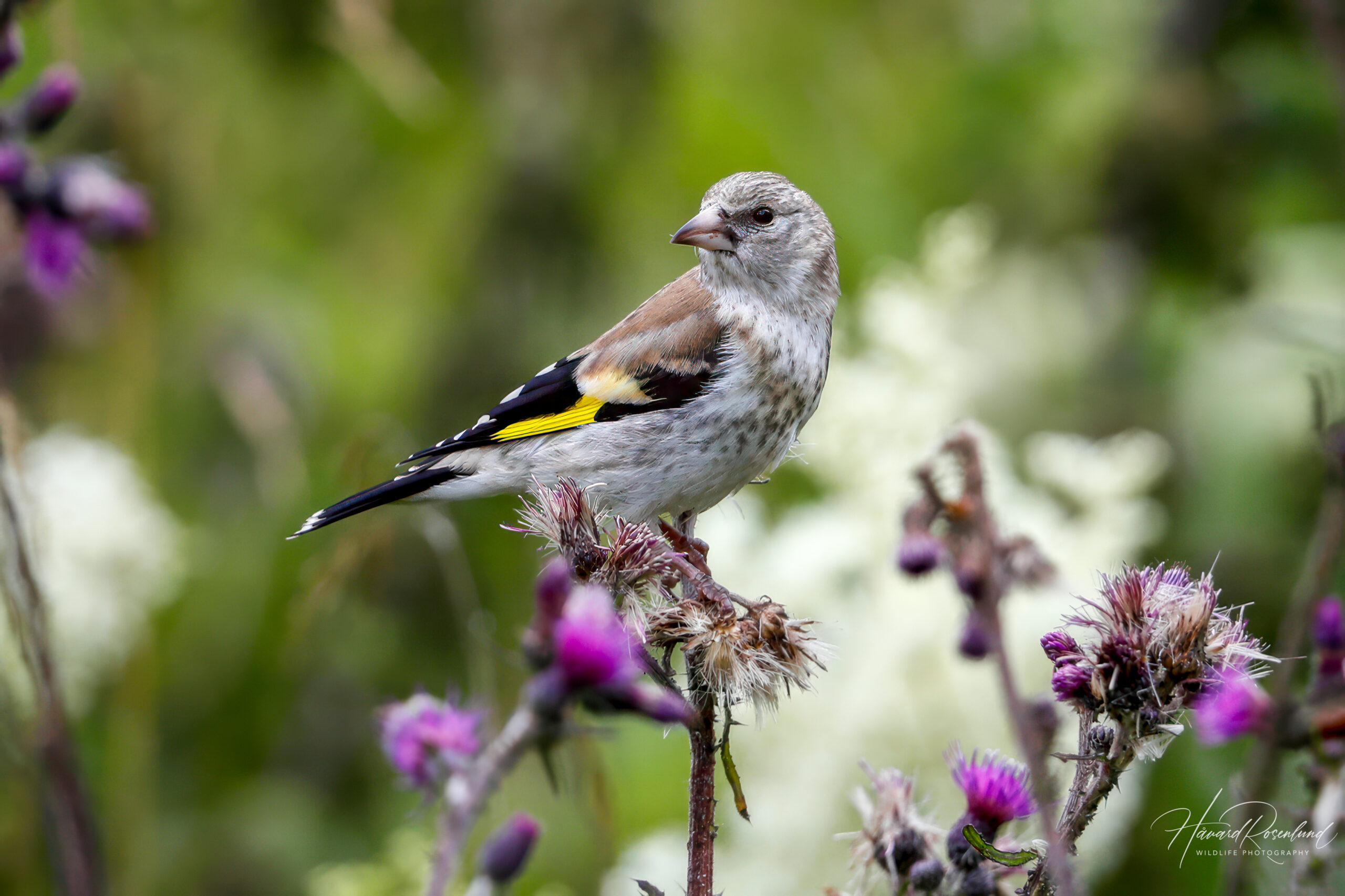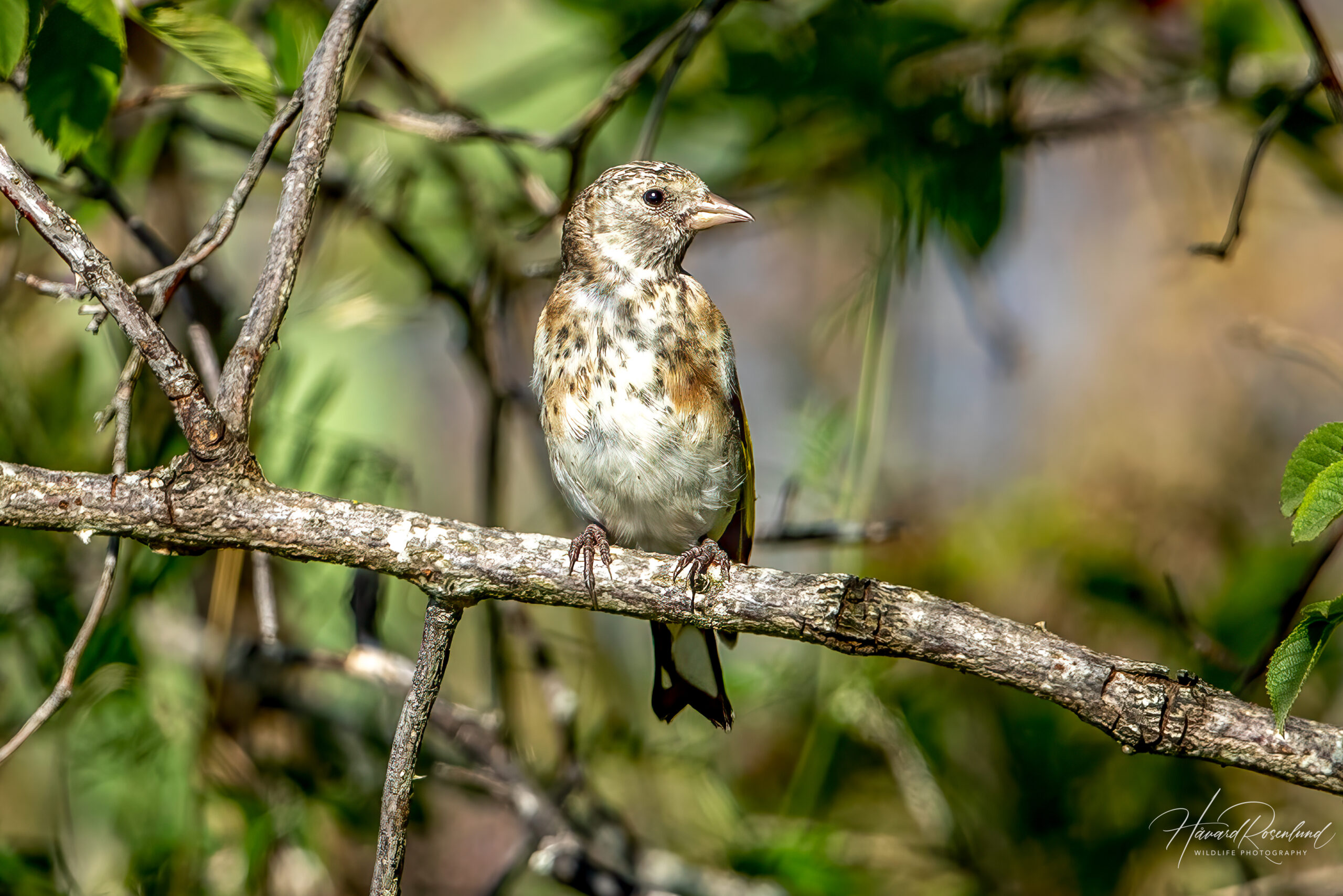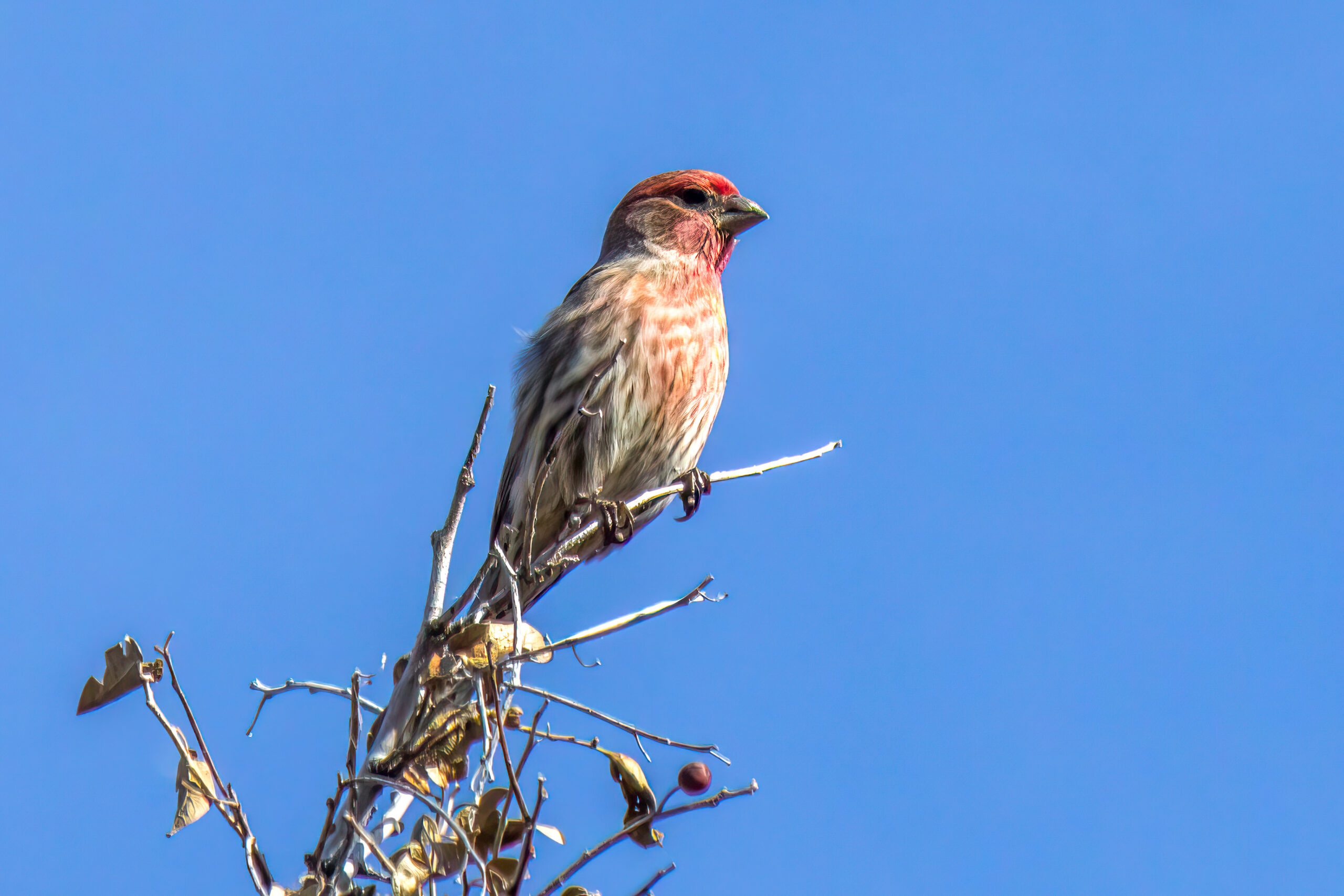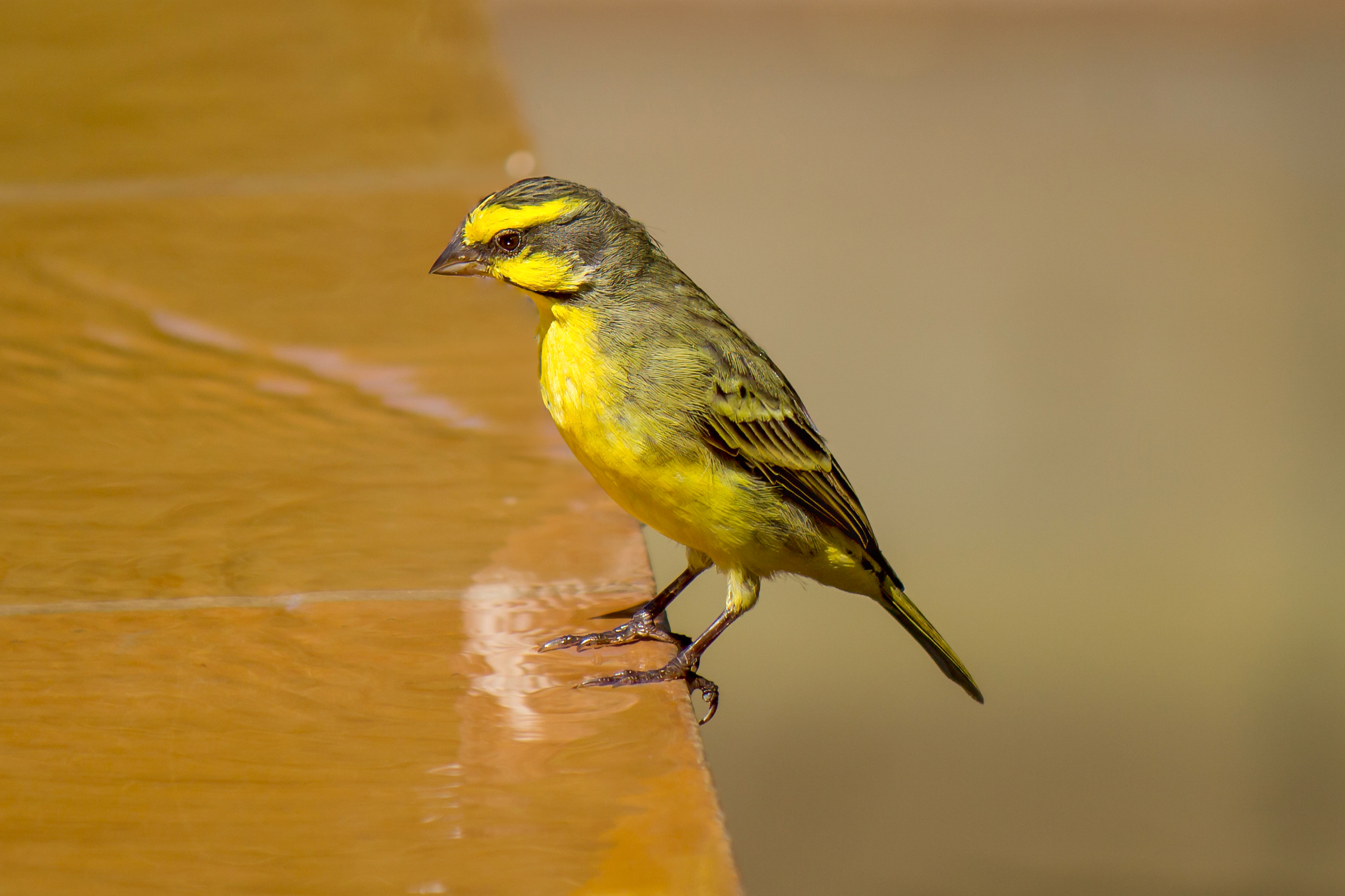European Goldfinch
(Carduelis carduelis)
Description
The European goldfinch (Carduelis carduelis) is a finch found across Europe, North Africa, and western and central Asia. It is known for its striking coloration. Adults have a red face and a black-and-white head. The back and flanks are brown, the breast and belly are white, and the wings are black with a broad yellow bar. Juveniles lack the colorful markings on the face and head. Their size typically ranges from 12 to 13 cm (4.7–5.1 in) in length, with a wingspan of 21 to 25.5 cm (8.3–10.0 in). They are easily distinguishable from other species by their unique face pattern and wing coloration. European goldfinches are also known for their beautiful singing and elaborate twittering calls.
Diet & habitat
European goldfinches prefer open, partially wooded lowlands, and are commonly found in gardens, parks, and orchards. They feed on a diet primarily consisting of seeds, especially from thistles and teasels, which they adeptly pick with their thin beaks. They also consume small insects and invertebrates, particularly during the breeding season. European goldfinches have a strong social structure and are often seen in flocks outside the breeding season.
Migration
These birds are partially migratory. Populations in the northeastern parts of their range move southwards during the winter, while those in the milder southern and western parts are more likely to be resident year-round.




